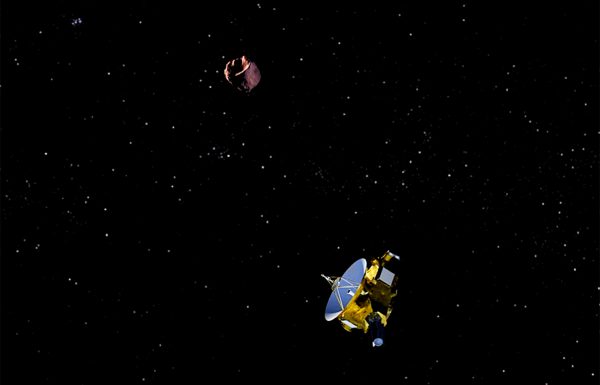
Long after its incredible encounter with Pluto and its moons in 2015, the New Horizons spacecraft is continuing its journey deeper into the Kuiper Belt in the outer reaches of the Solar System. Mission scientists and engineers are now preparing for its next close flyby, of a smaller body called 2014 MU69, on Jan. 1, 2019. Along the way, New Horizons makes occasional slight course corrections to keep it on track, and now the spacecraft has just successfully completed its latest one.
The gentle engine burn went according to plan, said NASA; the telemetry from the spacecraft reached the New Horizons mission operations center at the Johns Hopkins Applied Physics Laboratory (APL) in Laurel, Maryland, just after 1:15 p.m. EST. From New Horizons current location, it takes the radio signals more than five hours to reach Earth, from a distance of about 3.5 billion miles (5.6 billion kilometers). Pluto’s orbit, by comparison, ranges from 2.73-4.6 billion miles (4.4-7.4 billion kilometers).
New Horizons’ thrusters fired, as planned, for only 44 seconds, which adjusted the velocity of the spacecraft by about 44 centimeters per second, a little less than one mile per hour.
“One mile per hour may not sound like much,” said mission Principal Investigator Alan Stern, of the Southwest Research Institute in Boulder, Colorado, “but over the next 23 months, as we approach MU69, that maneuver will add up to an aim point refinement of almost six thousand miles (10,000 kilometers).”
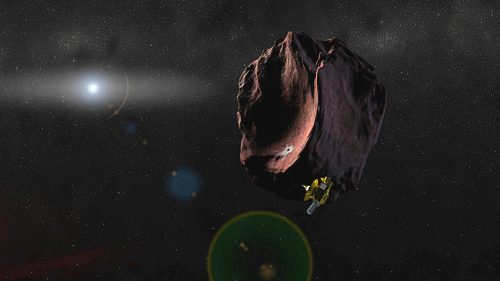
This was the first just adjustment performed since four similar ones in late 2015. These adjustments help to correct for refined measurements of 2014 MU69’s orbit from the Hubble Space Telescope since 2015. Besides the burn, the spacecraft has also now transitioned out of the “three-axis stabilized mode” that allowed New Horizons to make new telescopic observations of six other distant KBOs. Images will be sent back to Earth in the coming weeks, which will help to reveal more about their shapes, surface properties and any possible moons.
New Horizons had previously taken images of another KBO, called 1994 JR1. This KBO is only 90 miles (145 kilometers) wide. When the images were taken between April 7-8 last year, 1994 JR1 was about 69 million miles (111 million kilometers) away from the spacecraft.
“Combining the November 2015 and April 2016 observations allows us to pinpoint the location of JR1 to within 1,000 kilometers (about 600 miles), far better than any small KBO,” said Simon Porter, a New Horizons science team member from Southwest Research Institute (SwRI) in Boulder, Colo. Also, being able to more accurately plot the orbit of 1994 JR1 allowed scientists to disprove a theory that it may be a quasi-moon of Pluto.
2014 MU69 is a small Kuiper Belt Object (KBO) much farther from the Sun than Pluto, some 4 billion miles (6.4 billion kilometers) away. It is much smaller than Pluto, only about 13 to 25 miles (21 to 40 kilometers) across. 2014 MU69 was first discovered in 2014 by the Hubble Space Telescope, as part of a search for other KBOs. During the flyby, New Horizons will pass at a distance of only about 1,900 miles (3,000 kilometers), much closer than its flyby of Pluto. Scientists are, of course, looking forward to this next encounter.
“Even as the New Horizon’s spacecraft speeds away from Pluto out into the Kuiper Belt, and the data from the exciting encounter with this new world is being streamed back to Earth, we are looking outward to the next destination for this intrepid explorer,” said John Grunsfeld, chief of the NASA Science Mission Directorate in Washington.
The journey to 2014 MU69 is part of the Kuiper Belt Extended Mission (KEM), the main objectives of which include:
- Make distant flyby observations of about 20 other KBOs during 2016-2020, determining their shapes, satellite populations, and surface properties – something no other mission or ground-based telescope can.
- Make sensitive searches for rings around a wide variety of KBOs during 2016-2020.
- Conduct a heliospheric transect of the Kuiper Belt, making nearly continuous plasma, dust, and neutral gas observations from 2016 to 2021, when the spacecraft reaches 50 astronomical units (AU) from the Sun.
- Potentially conduct astrophysical cruise science in 2020 and 2021, after the MU69 flyby, if NASA desires.
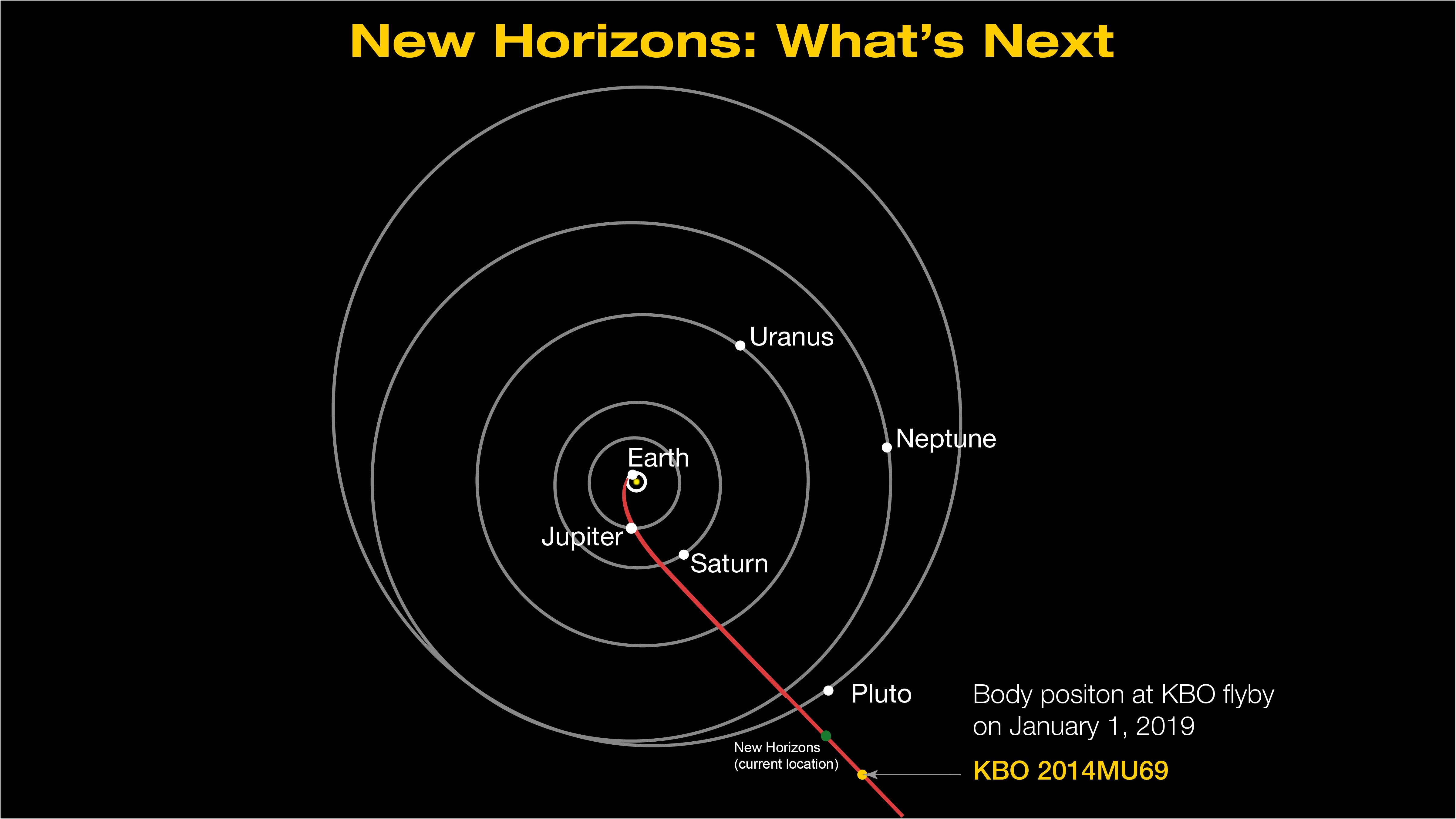
With KEM, New Horizons’ mission would be extended until at least 2021.
The Kuiper Belt is a vast region of thousands of smaller objects such as Pluto (which is the largest known KBO) beyond Neptune. These icy and rocky objects are leftover relics from the formation of the early Solar System, and so can provide valuable clues as to how the Solar System formed and evolved. The Kuiper Belt is similar to the main Asteroid Belt between Mars and Jupiter. As noted by Stern:
“The Kuiper Belt is a rich scientific frontier. Its exploration has important implications for better understanding comets, the origin of small planets, the Solar System as a whole, the solar nebula, and dusty Kuiper Belt-like disks around other stars, as well as for studying primitive material from our own Solar System’s planet formation era. The exploration of the Kuiper Belt and KBOs like MU69 by New Horizons would transform Kuiper Belt and KBO science from a purely astronomical pursuit, as it is today, to a geological and geophysical pursuit.”
Last October, New Horizons finished sending back all of the data from its Pluto flyby, over 50GB, which took over a year.
“The Pluto system data that New Horizons collected has amazed us over and over again with the beauty and complexity of Pluto and its system of moons,” said Stern. “There’s a great deal of work ahead for us to understand the 400-plus scientific observations that have all been sent to Earth. And that’s exactly what we’re going to do – after all, who knows when the next data from a spacecraft visiting Pluto will be sent?”
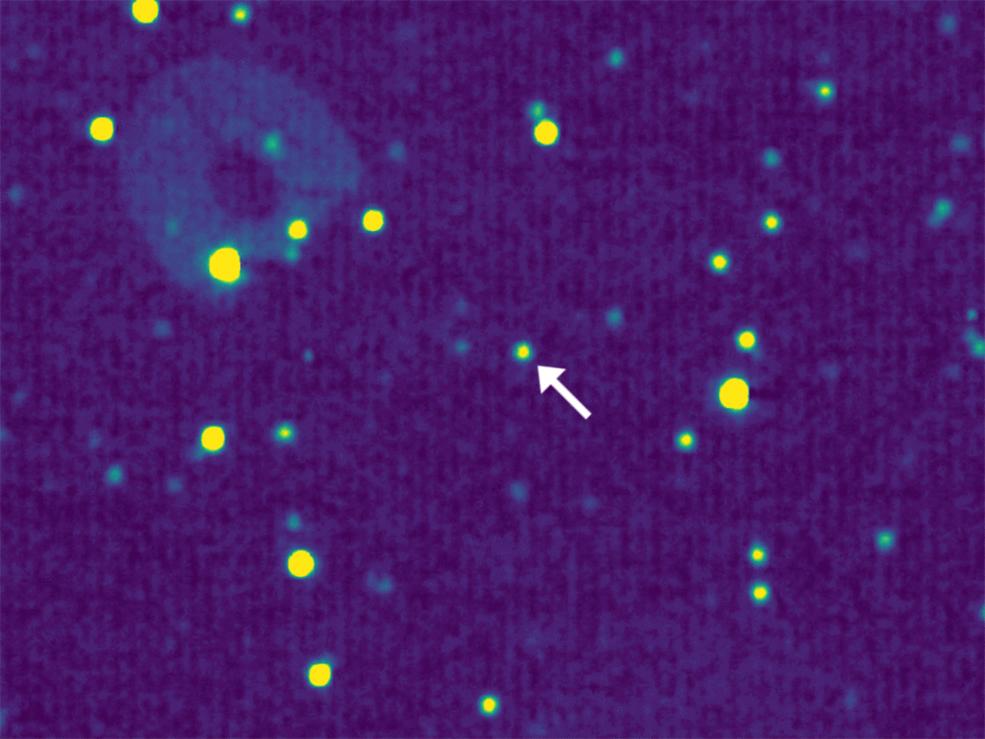
“We’re excited about the exploration ahead for New Horizons, and also about what we are still discovering from Pluto flyby data,” he added. “Now, with our spacecraft transmitting the last of its data from last summer’s flight through the Pluto system, we know that the next great exploration of Pluto will require another mission to be sent there.”
Or as Alice Bowman, Mission Operations Manager at JHUAPL, put it, “We have our pot of gold.”
New Horizons completely revolutionized our knowledge of Pluto and its five moons – worlds of bizarre and alien geological activity previously thought to be unlikely at best. With nitrogen ice glaciers, ancient nitrogen rivers, water ice mountains, possible ice volcanoes and a hazy atmosphere, Pluto is a wild place. Plus, both Pluto and its largest moon Charon probably have subsurface oceans, just like some other icy moons in the Solar System, although Charon’s is now frozen. Incredible, given how cold and distant they are from the Sun.
The flyby of Pluto and its moons was an exciting event in planetary exploration, but there is still a lot of exploring left to do for New Horizons, which is now ready to continue its journey farther into the Kuiper Belt, a distant and remote region still unexplored – until now.
Follow our New Horizons mission page for regular updates.
Be sure to “LIKE” AmericaSpace on Facebook and follow us on Instagram & Twitter!
Missions » New Horizons »



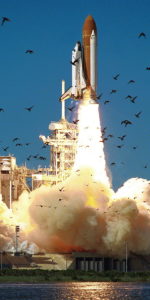

Curious does this trajectory take the craft into the direction of “Planet Nine” at some point?
No, it’s going in almost completely the opposite direction